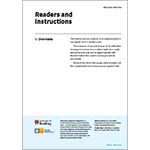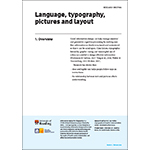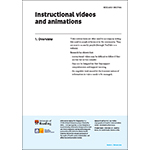Our briefings summarise research findings relevant to instructional text for diagnostic tests from an information design perspective.
Information design makes complex information clear with the needs of users in mind and recognises that visual presentation works with language to communicate successfully with a given audience. Clear layout, typographic hierarchy, graphic cueing and meaningful use of colour help readers navigate instructions, as well as for other kinds of heath information as well (Dickinson & Gallina, 2017; Tong et al., 2014; Walker, 2017). Information designers want to ascertain where people make errors as a result of instructional text they are using, and how improvements may be made (see Waller & VandenBerg, 2017).
Our first research briefings are listed here:
 1. Readers and instructions. The difficulties of using instructions for procedural tasks, how people use instructions, and how to support people with the information they need to execute procedures successfully.
1. Readers and instructions. The difficulties of using instructions for procedural tasks, how people use instructions, and how to support people with the information they need to execute procedures successfully.
Research briefing_Readers and instructions_february 2021.pdf
 2. Language, typography, pictures and layout. How to support people in locating, understanding and applying information in instructions.
2. Language, typography, pictures and layout. How to support people in locating, understanding and applying information in instructions.
Research briefing_Typography and layout_february 2021.pdf
 3. Instructional videos and animations. What works to create instructional videos that foster learning.
3. Instructional videos and animations. What works to create instructional videos that foster learning.
Research briefing_Instructional videos_february 2021.pdf
